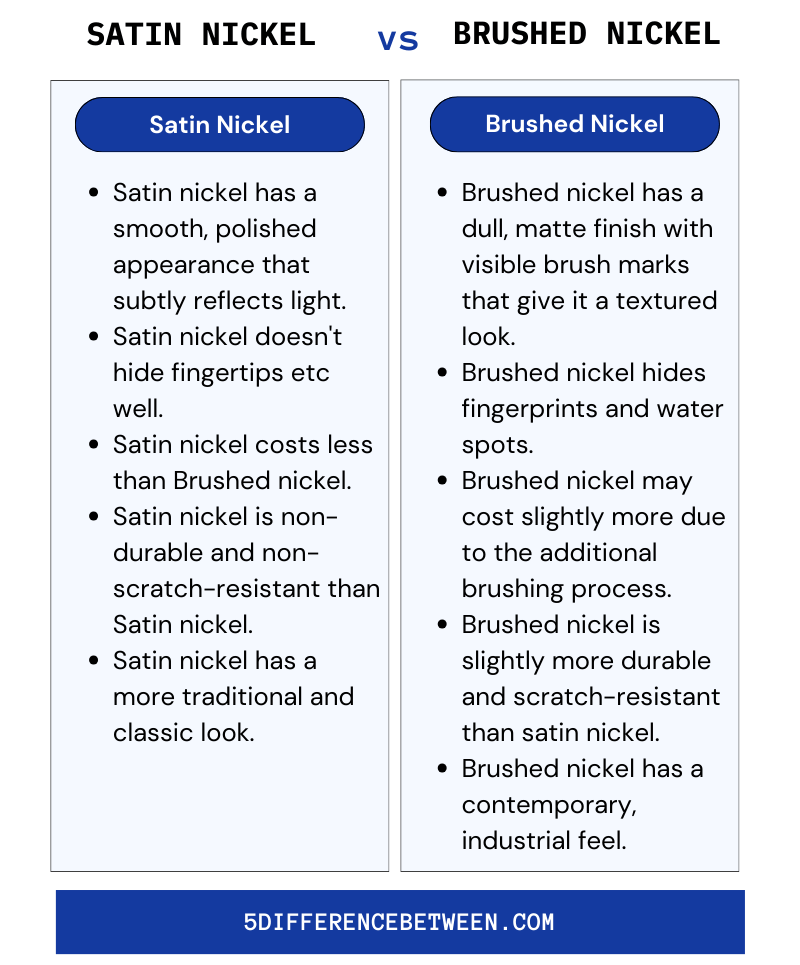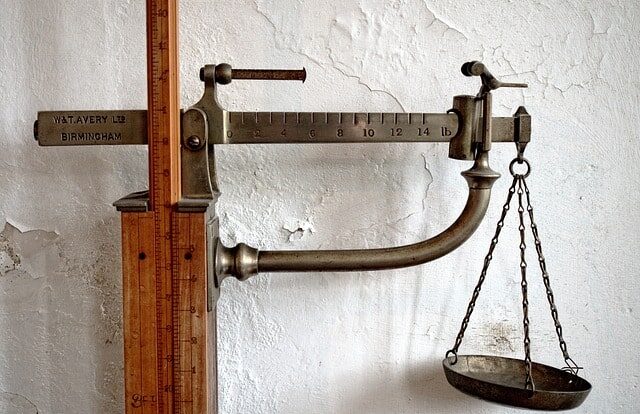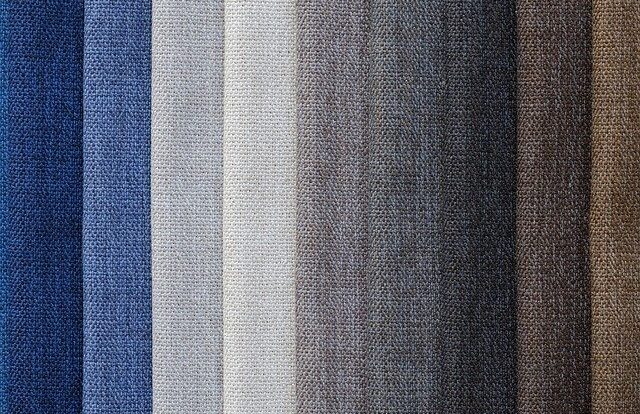So you’re thinking of using nickel finishes in your home and wondering about the difference between satin nickel and brushed nickel. Good for you – nickel is a great choice. Satin and brushed nickel are two of the most popular nickel finish options out there, and for good reason. They’re sleek, contemporary, durable, and really help other elements like cabinet hardware, lighting fixtures or plumbing fixtures pop.
The good news is you really can’t go wrong with either – satin nickel and brushed nickel are both great options that can work with a range of decor styles. But knowing the differences will help ensure you get exactly the look you want.
Which Finish Is Best for Your Home? Factors to Consider
Satin nickel has a dull, matte finish that helps hide fingerprints and water spots. It’s a great low-maintenance choice if you want an understated modern look. Satin nickel pairs well with stainless steel appliances and darker cabinetry.
Brushed nickel has subtle brushed lines that give it a soft, weathered appearance. It’s equally versatile but a bit more traditional. Brushed nickel is a nice complement to lighter granite countertops and wood trim. However, its textured finish requires frequent wiping down to prevent buildup.
Also Read > Difference Between Beige and Tan
The cost is similar for both types of nickel, so your choice comes down to aesthetics and how much elbow grease you want to put in. Satin nickel is nearly indestructible and wipe-clean, while brushed nickel looks lovely but needs regular polishing to maintain its shine.
In smaller bathrooms or kitchens, satin nickel can make the space feel more open and airy. Brushed nickel tends to suit larger, grander architectural styles. But in the end, choose what you love and what fits your home’s character. After all, you’ll be living with these fixtures for years to come!
Whichever finish you select, both offer a stylish, modern take on traditional chrome. Your hardware and plumbing fixtures can serve as the perfect finishing touch, turning an ordinary space into something special.
Pros and Cons
- Pros of Satin Nickel
Satin nickel has a soft, brushed appearance that hides fingerprints and water spots well. It has a matte, silvery sheen that provides contrast against darker cabinetry and countertops. Satin nickel is also very durable and scratch-resistant.
- Pros of Brushed Nickel
Brushed nickel has a subtly textured finish with fine scratches in a single direction that gives it a slight metallic sheen. It has an industrial, masculine look that pairs well with contemporary spaces. Brushed nickel is also very low-maintenance and hides imperfections like scratches.
- Considerations
Both finishes work well in kitchens and bathrooms and complement most decor styles. However, satin nickel may appear slightly more yellow, while brushed nickel has a cooler, greyer tone. Brushed nickel can look too masculine or harsh in some traditional or farmhouse-style homes.
Satin Nickel Vs Brushed Nickel
The main difference between satin nickel and brushed nickel is the finish. Satin nickel has a smooth, lightly brushed finish with a soft sheen. Brushed nickel has a rough, textured finish with visible brush strokes.

Satin Nickel
- Satin nickel has a smooth, polished appearance that subtly reflects light.
- Satin nickel doesn’t hide fingertips etc well.
- Satin nickel costs less than Brushed nickel.
- Satin nickel is non-durable and non-scratch-resistant than Satin nickel.
- Satin nickel has a more traditional and classic look.
Brushed Nickel
- Brushed nickel has a dull, matte finish with visible brush marks that give it a textured look.
- Brushed nickel hides fingerprints and water spots.
- Brushed nickel may cost slightly more due to the additional brushing process.
- Brushed nickel is slightly more durable and scratch-resistant.
- Brushed nickel has a contemporary, industrial feel.
In summary, the main differences are the finish – satin nickel is smooth and shiny while brushed nickel is dull and textured. Brushed nickel is a bit more durable and scratch-resistant. The price and usage are quite similar. The choice between the two comes down to personal style and preference for the look you want. Both are great options for a range of applications, so you really can’t go wrong with either choice.






